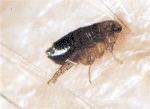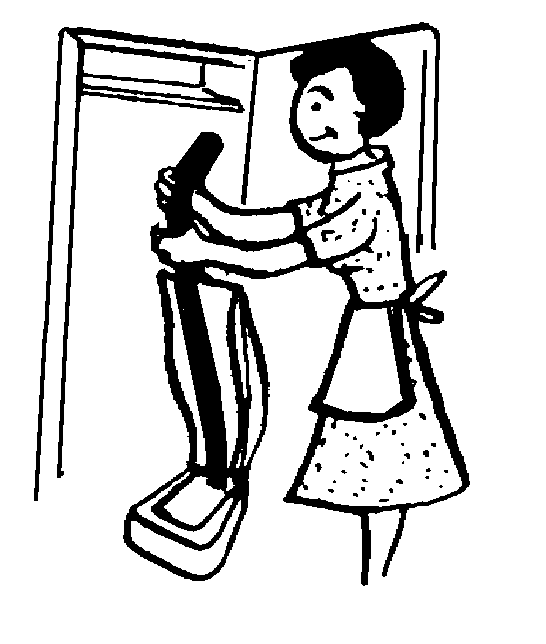

The female flea lays her tiny, white eggs loosely on the hairs, in the feathers, or in the habitat of the host. The eggs readily fall off the host onto the ground, floors, bedding, or furniture. Some fleas can lay 500 eggs over a period of several months by laying batches of three to eighteen eggs at a time. The tiny eggs hatch in one to twelve days after being deposited. The white, worm-like larva avoids light and feeds on particles of dead animal or vegetable matter generally present in cracks and crevices. Within 7 to 14 days, unless food has been scarce, the third larval stage is completed, and the larva spins a tiny cocoon and pupates. Usually after a week the adult flea emerges and begins its search for blood.

Fleas are known to remain in the pupal stage from five days to five weeks in the absence of hosts. Adults emerge from the pupal case when vibrations from pets or humans let them know a host is near. This is one reason why people returning to an unoccupied home may suddenly be attacked by an army of fleas.
Adult fleas must feed on blood in order to reproduce; however, adults can live for long periods without feeding. Fleas usually live and breed most heavily where pets rest. Persons coming near these resting places are also subject to attack. If fleas are established in a home, they will feed on man as well as on the pets. The usual places of attack are the ankles and lower portions of the legs.
According to the National Pest Management Association's Field Guide to Structural Pests, flea control is a multi-part process. We'll outline that here.
First, the pet(s) must be treated, and that done on the same day that the home is treated. You can have your family veterinarian do it, or if you have the products, you can do it yourself. The key is to be thorough!
Next, you, the homeowner or tenant, must prepare for the treatment. Follow these steps:
* Remove all items such as toys and pillows off the floor.
* Remove all articles from under the beds, off closet floors and from under furniture.
* THOROUGHLY vacuum all upholstered furniture, floors and carpeting, paying extra attention to seams in furniture and wall-floor junctions.
* Remove the bag from the vacuum IMMEDIATELY and wrap it in a plastic trash bag. Dispose of it in your outside trash container. (NOTE: If this step is missed, fleas can repopulate the home from inside the vacuum.)
* Cover any aquariums and turn off the air pump to it.
* Remove all pets, including birds from the home.
Now, it's our turn. We'll apply a combination of products to the upholstered furniture and carpeting to kill the adult fleas and the immature stages. Using an "adulticide" and a growth regulator, we can eliminate the eggs, larva, and adult fleas. You'll need to stay out of the home until the treated areas dry so that you don't contact any wet insecticide.
But, as you noticed in the chart above, there are 4 stages of flea life cycle. What about the pupae?
The fleas inside those cocoons are very well protected from outside dangers, including insecticides. So, you need to repeat the vacuum process daily after the treatment for at least 10 days, disposing of the bag each time.
From Pest Control Technology Magazine:
"One of the major reasons for flea control failures is the improper preparation of the premises."
"Vacuuming is the most important preparation task and results in removing dirt and debris that bind with insecticides, opening up carpet fibers to permit better penetration, removing some adult fleas, and stimulating adult fleas to emerge from their cocoons where they will contact insecticide. Fleas in carpet heavily laden with dust and pet hair will not be controlled, no matter how much insecticide is applied."

Even after all of this, it will take several days for the fleas to die off completely. The fleas in the cocoons (the ones that the vacuum misses, which will happen) will still have to emerge, come in contact with the treated carpet, and die. The time period from treatment to elimination is usually 21 days. Keep this in mind when you contract for flea control services. It simply will take a few days to be "flea free". If all the steps outlined are followed to the letter, it will insure the success of the treatment.
